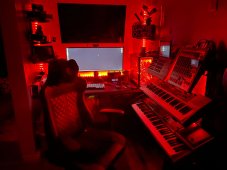V84x4
New Member
- Joined
- Mar 6, 2022
- Messages
- 11
New to DIY so thanks in advance
Building a Self-sustaining system for my computer room
3 x 235w 7.8amp 32V Trina Solar panels
Victron 150/85 Controller
4 EVE 280Ah 3.2V cells (in series 280Ah 12V)
Victron 500A shunt
JBD 120A BMS
I understand that a 120amp overkill BMS will only support up to 1536 watts
My question is Can I buy a 2500 or 3000W inverter for future-proofing (More Batteries)
And just be careful about the amount of amp draw (Not over 1500 watts) for now
until I build my next Battery bank?
Or....... can I buy another piece of equipment to monitor and make sure I DO NOT draw too many amps
until I can afford to build another 12V 280Ah battery bank?
I want to be safe
best regards, Rick

Building a Self-sustaining system for my computer room
3 x 235w 7.8amp 32V Trina Solar panels
Victron 150/85 Controller
4 EVE 280Ah 3.2V cells (in series 280Ah 12V)
Victron 500A shunt
JBD 120A BMS
I understand that a 120amp overkill BMS will only support up to 1536 watts
My question is Can I buy a 2500 or 3000W inverter for future-proofing (More Batteries)
And just be careful about the amount of amp draw (Not over 1500 watts) for now
until I build my next Battery bank?
Or....... can I buy another piece of equipment to monitor and make sure I DO NOT draw too many amps
until I can afford to build another 12V 280Ah battery bank?
I want to be safe
best regards, Rick



